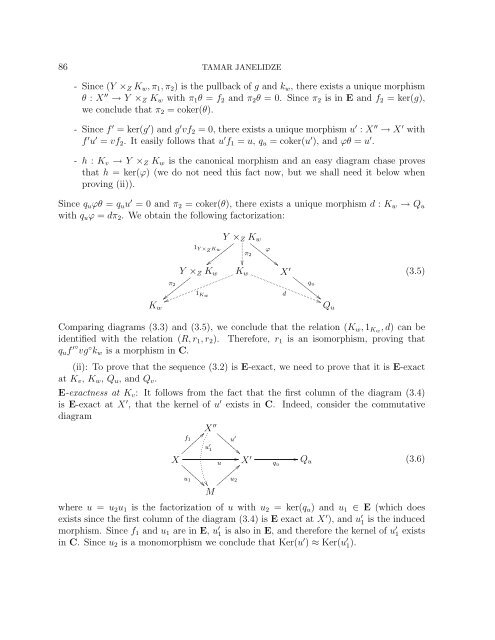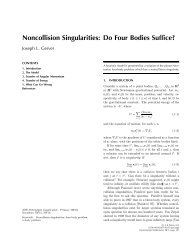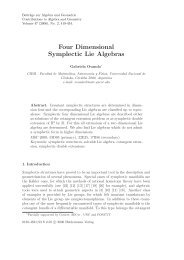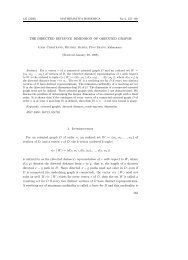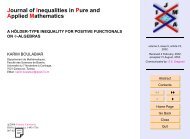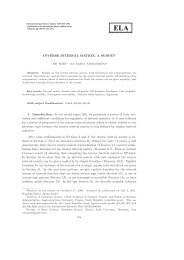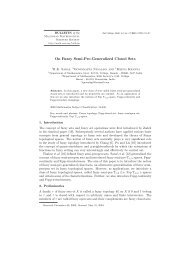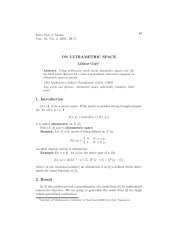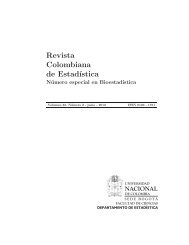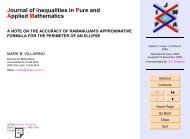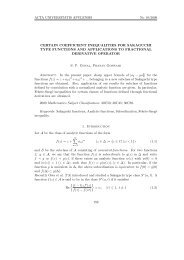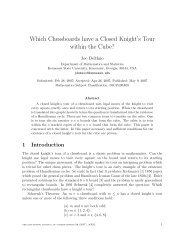SNAKE LEMMA IN INCOMPLETE RELATIVE HOMOLOGICAL ...
SNAKE LEMMA IN INCOMPLETE RELATIVE HOMOLOGICAL ...
SNAKE LEMMA IN INCOMPLETE RELATIVE HOMOLOGICAL ...
You also want an ePaper? Increase the reach of your titles
YUMPU automatically turns print PDFs into web optimized ePapers that Google loves.
86 TAMAR JANELIDZE<br />
- Since (Y × Z K w , π 1 , π 2 ) is the pullback of g and k w , there exists a unique morphism<br />
θ : X ′′ → Y × Z K w with π 1 θ = f 2 and π 2 θ = 0. Since π 2 is in E and f 2 = ker(g),<br />
we conclude that π 2 = coker(θ).<br />
- Since f ′ = ker(g ′ ) and g ′ vf 2 = 0, there exists a unique morphism u ′ : X ′′ → X ′ with<br />
f ′ u ′ = vf 2 . It easily follows that u ′ f 1 = u, q u = coker(u ′ ), and ϕθ = u ′ .<br />
- h : K v → Y × Z K w is the canonical morphism and an easy diagram chase proves<br />
that h = ker(ϕ) (we do not need this fact now, but we shall need it below when<br />
proving (ii)).<br />
Since q u ϕθ = q u u ′ = 0 and π 2 = coker(θ), there exists a unique morphism d : K w → Q u<br />
with q u ϕ = dπ 2 . We obtain the following factorization:<br />
1 Y ×Z Kw<br />
Y × Z K w <br />
π 2<br />
<br />
Y × Z K w K w<br />
ϕ<br />
X ′ (3.5)<br />
<br />
π 2<br />
q u<br />
1 Kw<br />
d<br />
<br />
K w Q u<br />
Comparing diagrams (3.3) and (3.5), we conclude that the relation (K w , 1 Kw , d) can be<br />
identified with the relation (R, r 1 , r 2 ). Therefore, r 1 is an isomorphism, proving that<br />
q u f ′◦ vg ◦ k w is a morphism in C.<br />
(ii): To prove that the sequence (3.2) is E-exact, we need to prove that it is E-exact<br />
at K v , K w , Q u , and Q v .<br />
E-exactness at K v : It follows from the fact that the first column of the diagram (3.4)<br />
is E-exact at X ′ , that the kernel of u ′ exists in C. Indeed, consider the commutative<br />
diagram<br />
X<br />
X ′′ <br />
f <br />
1<br />
u ′<br />
u ′ 1<br />
<br />
u<br />
u 1<br />
u 2<br />
<br />
<br />
M<br />
X ′ q u<br />
Q u<br />
(3.6)<br />
where u = u 2 u 1 is the factorization of u with u 2 = ker(q u ) and u 1 ∈ E (which does<br />
exists since the first column of the diagram (3.4) is E exact at X ′ ), and u ′ 1 is the induced<br />
morphism. Since f 1 and u 1 are in E, u ′ 1 is also in E, and therefore the kernel of u ′ 1 exists<br />
in C. Since u 2 is a monomorphism we conclude that Ker(u ′ ) ≈ Ker(u ′ 1).


